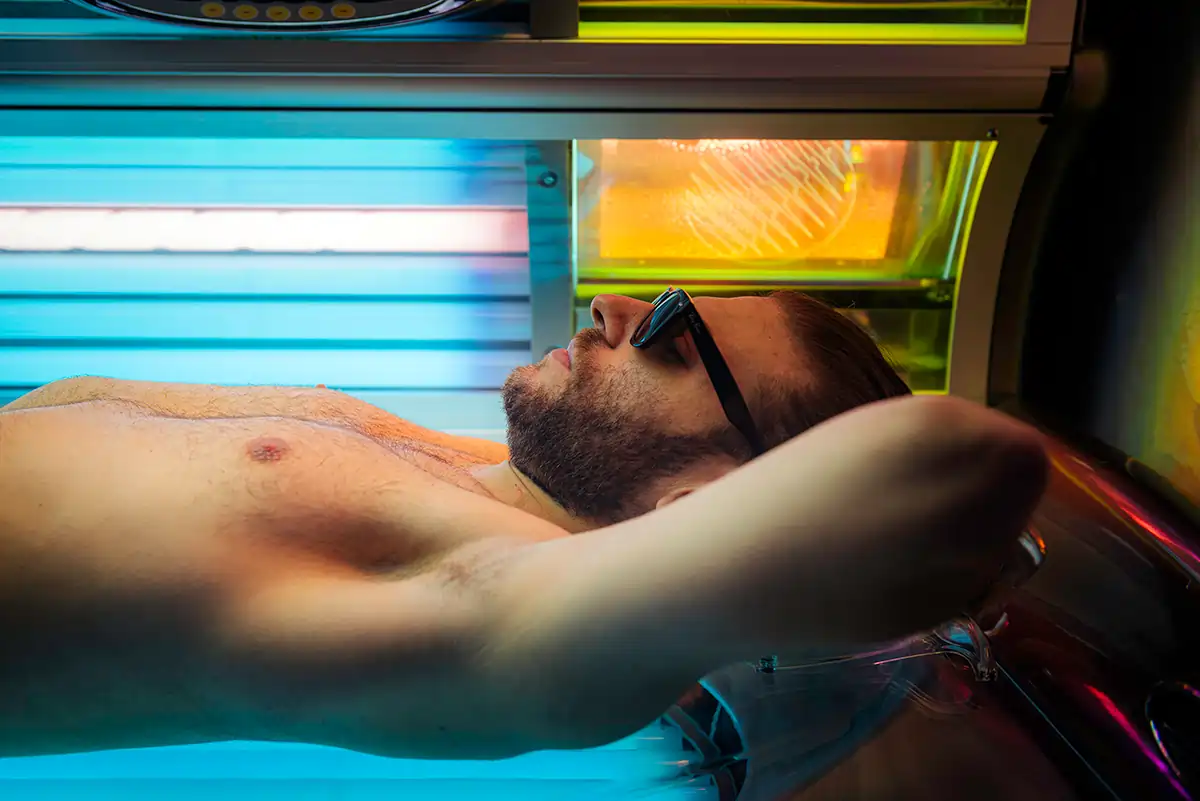Science behind tanning is more than just glowing skin—it’s a process your body naturally responds to when exposed to UV rays. Although many associate tanning with beauty, there’s a fascinating biological mechanism happening beneath the surface. Whether you’re prepping for summer or enjoying a relaxing indoor session, knowing how tanning works can help you protect your skin, optimize your results, and enjoy the benefits of radiant color—safely and confidently.

1. Visit Megasun Solarium Larnaca for Smart Tanning
Choosing the right environment is essential for effective tanning. At Megasun Solarium Larnaca, located in the vibrant Rise Urban Art Hotel, we provide safe, comfortable, and controlled tanning sessions. Unlike the unpredictable outdoor sun, our modern solarium beds deliver consistent and regulated UV exposure, helping you achieve a beautiful, even tan without burning.
Moreover, trained staff ensure that protective equipment, such as UV goggles and skin lotions, are always available. You’re not just tanning—you’re investing in your skin’s health.
2. Science Behind Tanning: What Really Happens to Your Skin?
When your skin is exposed to ultraviolet light, it begins a natural defense mechanism. UVB rays stimulate melanocyte activity, producing melanin—the pigment responsible for skin color. At the same time, UVA rays penetrate deeper, oxidizing existing melanin for immediate color.
This process isn’t just about aesthetics. It’s a way your skin protects itself. Still, overexposure can damage cells, so understanding UV levels is essential to strike the right balance.
3. The Role of UVA and UVB in Tanning
Both UVA and UVB rays affect your skin, but in different ways. UVA rays penetrate deeper, reaching the dermis and causing long-term skin changes, including wrinkles. UVB rays, on the other hand, stimulate new melanin in the epidermis.
By tanning indoors, you gain better control over how much of each ray type your skin absorbs. Our MegaSun machines are designed to deliver optimal balances for maximum results and minimal risks.
For safe, consistent tanning, this Cyprus dermatologist-approved chart can help you understand how long is too long.
4. Science Behind Tanning: Different Skin, Different Needs
Not all skin types tan the same. Fair skin (Type I) is prone to burning, while darker tones (Type V-VI) naturally absorb more sunlight. By knowing your skin type, you can tailor your tanning schedule, choose suitable products, and avoid overexposure.
At our solarium, we provide Devoted Creations creams and moisturizers tailored to every skin tone. These products include collagen boosters, tattoo protectors, and anti-aging elements, allowing you to glow with health and confidence.
5. Conclusion: Tanning Is Beautiful—When Done Right
When you understand the science behind tanning, you make smarter choices for your skin and confidence. By balancing UV exposure, using protective products, and giving your skin what it needs post-session, your tan will not only look better but last longer.
Whether you’re preparing for sunny beach days or just want to feel great in your skin—now is the perfect time to begin. Combine beauty, relaxation, and science at MegaSun. Check our blog post Tanning Cream Choice for Skin : How to Choose the Right Tanning Cream for Your Skin Type.
BLOG
Discover the Latest in Tanning and Skin Care
Stay updated with the newest tips and trends in tanning and skincare from our blog. Learn how to achieve the perfect tan, care for your skin, and explore the benefits of our solarium.
Top 5 Reasons Locals Love MegaSun Larnaca
Relaxing tanning routine tips: Learn how to create a calm and…
Beach Tan vs Solarium Tan: What’s the Difference?
Relaxing tanning routine tips: Learn how to create a calm and…


